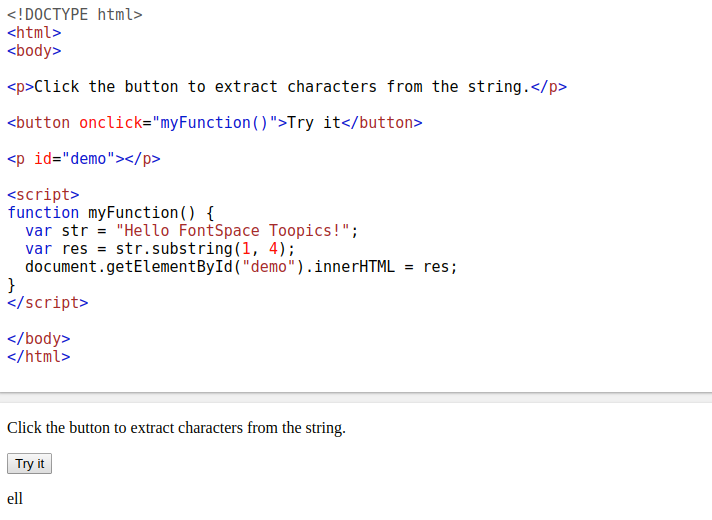

String subSequence() With Negative Example: In the below example we will try to execute by entering the negative value in the index position. ("substring equals subSequence ? " + (str.substring(4, 14).equals(str.subSequence(4, 14)))) equals() - for comparing two strings, returns true or false. The figure also shows that to compute the index of the last character of a string, you have to subtract 1 from the value returned by the length method. When you compare with equals(), its comparing value The Java String class substring () method returns a part of the string. ("substring = subSequence ? " + (str.substring(4, 14) = str.subSequence(4, 14))) The simplest way to create a new String in Java is to assign a string literal directly to the String reference like, 1 String str 'abc' Java maintains a pool of string literals. When you are compare with = its comparing Hashcode which is different There are several ways to create a String object in Java. ("website name: " + str.subSequence(4, 20)) Endindex of substring starts from 1 and not from 0. The substring begins with the character at the specified index and extends to the end of this string.

("First 4 char String: " + str.subSequence(0, 4)) String substring (): This method has two variants and returns a new string that is a substring of this string. String str = "("Last 4 char String: " + str.subSequence(str.length() - 4, str.length())) This method returns CharSequence from a string.
#Java substring start and end index equals 0 how to
Return this.substring(beginIndex, endIndex) Įxample Of Java String subSequence(): The code snippet below demonstrates how to use the subSequence() method. And the code snippet is looking something like the below: public CharSequence subSequence(int beginIndex, int endIndex) You will also get an error if the startIndex is larger than the endIndex.Tips: When we are invoking the subSequence() method it internally invokes the substring() method. Note: If the startIndex or endIndex is negative or larger than the string's length, you will get an error. Working of Java String substring() method If the endIndex is not passed, the substring beings with the character at the specified index and extends to the end of the string.The substring beings with the character at the startIndex and extends to the character at index endIndex - 1.QString, section(const QString &sep, qsizetype start, qsizetype end -1, QString::SectionFlags. lastIndexOf(String str, int fromIndex) - Returns the index within this string of the last occurrence of the specified substring, searching backward starting at. The substring begins with the character at the specified index and extends to the end of this string or up to endIndex 1, if the second argument is given. The dstOffset argument must be greater than or equal to 0, and less than or equal to the length of this sequence. The QString class provides a Unicode character string. (end-start) in this sequence, if k is greater than or equal to dstOffset+end-start. The (int beginIndex, int endIndex) method returns a new string that is a substring of this string.The substring begins at the specified beginIndex and extends to the character at index endIndex - 1.Thus the length of the substring is endIndex-beginIndex. The substring() method returns a substring from the given string. The first char value is at index 0, the next at index 1, and so on. The substring() method takes two parameters. The syntax of the substring() method is: string.substring(int startIndex, int endIndex)


 0 kommentar(er)
0 kommentar(er)
